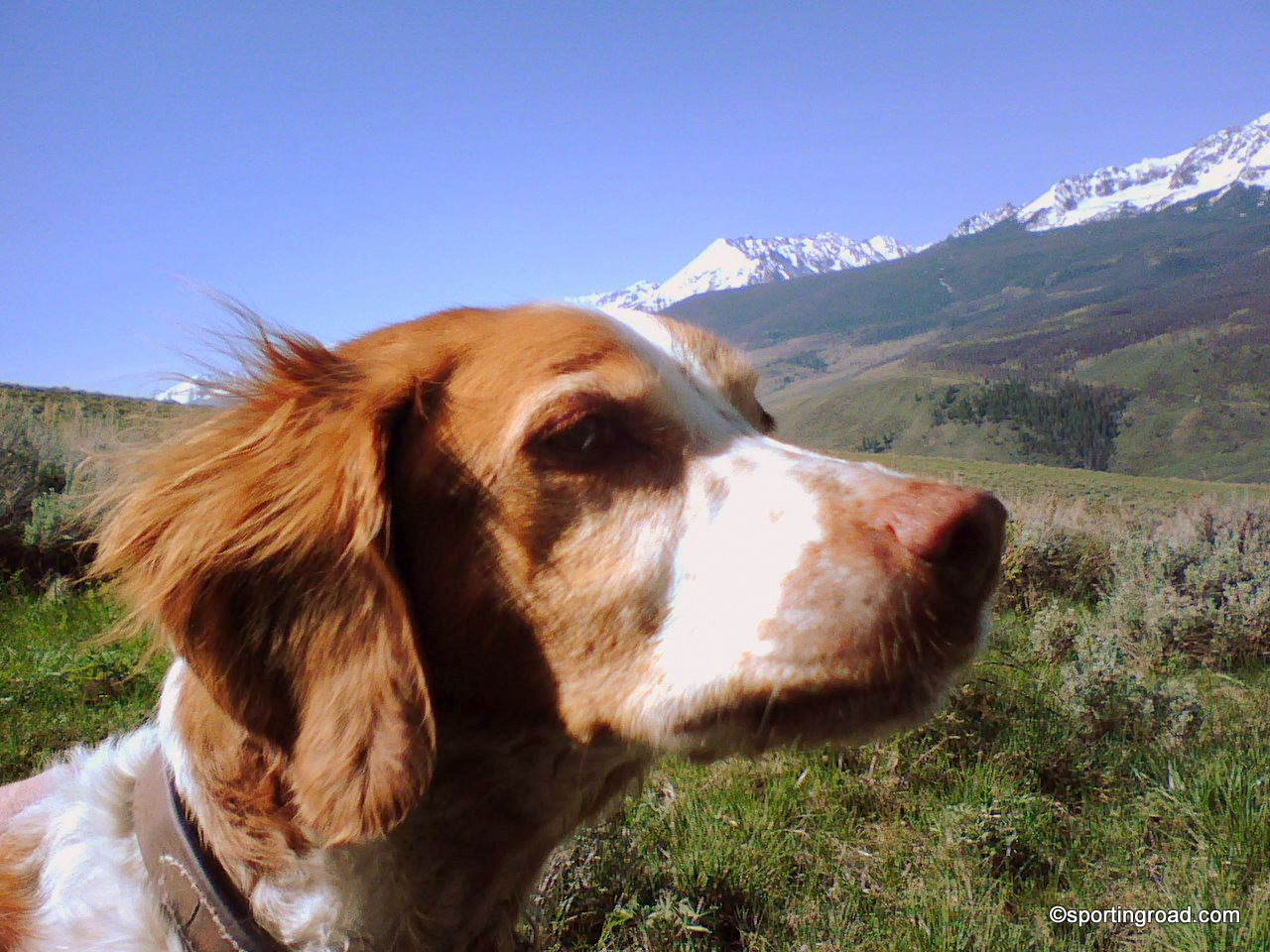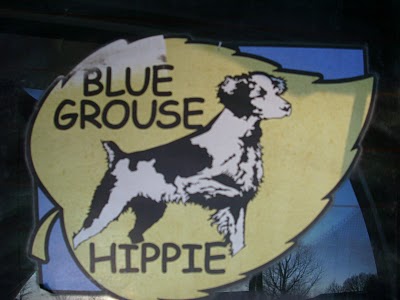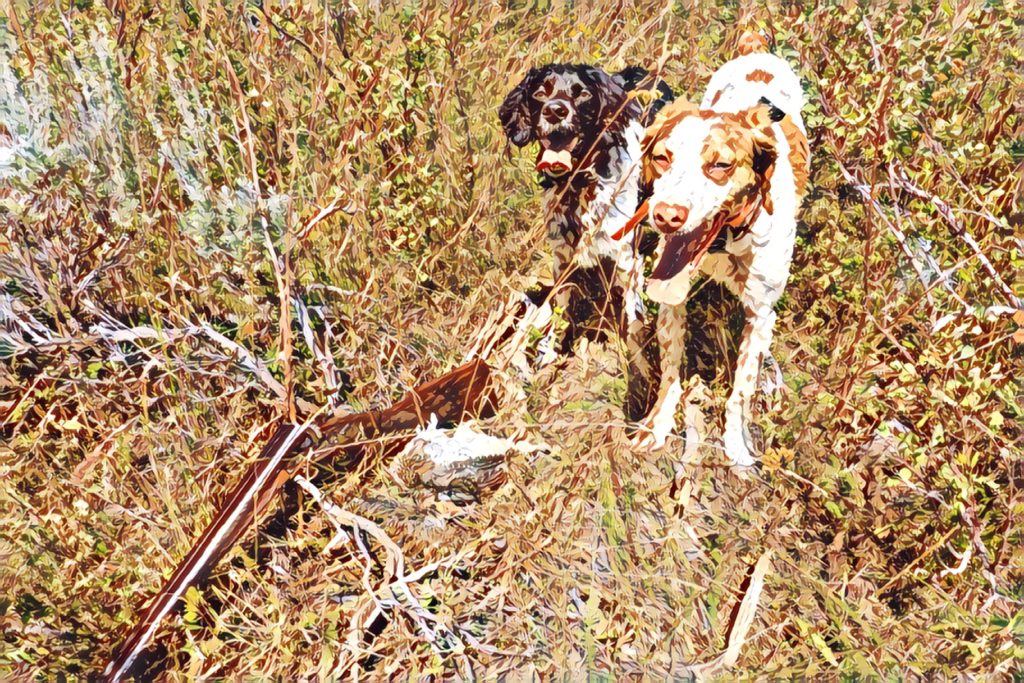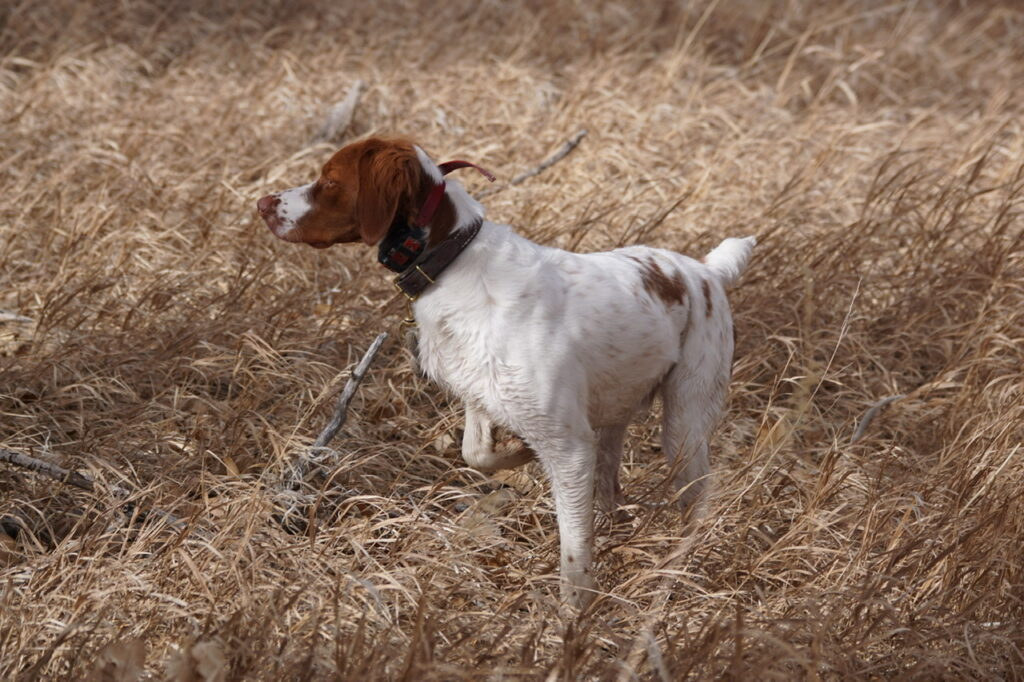I am a wanderlust zealot for wild birds and expansive places. l live for the time spent following our Brittanys in public uplands, the lowlands, and everywhere in between. Some call us “The Blue Grouse Hippies.”
“In a civilized and cultivated country, wild animals only continue to exist at all when preserved by sportsmen.” –Theodore Roosevelt
I have a friend who always responds to his wife’s inquiries about when he will be home from hunting trips with, “Hey, I am out here working to feed the family and you’re sitting at home and giving me a hard time?” He hunts a lot, so he has several versions of this quip, and a gracious wife who still finds it humorous.
But, my friend is right. After all, hunting is still in one way or another, about putting food on the family’s table. Organic, sustainable, locavore, add all the new generation terms here. But, it’s also about creating memories, bonds, and adventures. And most of all, it’s about a love of seeing a dog work, doing what he was bred to do. It’s about improvement, about compromise, about adaptability, and overcoming any and all obstacles. It can be about creating comrades or enjoying solitude, whatever you desire on that particular day. It can become about collecting, whether it be fine double guns or any other accouterments to hunting, such as leg bands from birds harvested afield.
But part of the experience of feeling alive and free in the outdoor world is making sure we do not bring all of that consumerism shit with us that we collect in the indoor world.
Dogs are like bbq sauce, everyone has their own opinion as to what makes a good one. But I like big ranging field trial bred Brittanies, as I like to cover a lot of ground. I hate for a day of grouse hunting to denigrate merely into an armed walk.
A.J. DeRosa writes: When the Project Upland audience was asked “Which would you describe as your TOP motivation for hunting?”, 39% of the audience said “for the dogs”. That’s an overwhelming number when second place motivation was tied at 15% for “being in nature” and “sport.” Now that word “sport” got me worked up for sure. (if you haven’t read the article “The Word ‘Sport’ in Hunting”, please do.) I am someone strongly against the word when put in relation to hunting. But for hunters 18 to 44, the motivation of “sport” dropped to 8%. In fairness, “fun” hit 14%, which ultimately is just word play between two cultures. Those aged 18 to 44 identified “being in nature” at 18%. We also asked “Would you say that dogs played a critical role in you becoming a hunter?” An overwhelming 75% answered “Yes.” We really have to point something out here that was generally not present when comparing age demographics on most responses: Common ground. When broken down by age, 18 to 44 was at 74% while ages 45 and older held at 75%. In marketing, this is called a “timeless” storytelling opportunity. Much like authenticity, it shows that there is a mutual story here that can promoted to both audiences without alienation. To dig another level deeper, we asked the classic “what came first the chicken or the egg?” question. Of the 88% of our audience that identified as owning a bird dog, we posed the question: “What came first, being a bird hunter, or the bird dog?” The number is 28%. More than a quarter of the audience said “I got a bird dog then became a bird hunter.” And that astonishing number increased to 34% when only looking at ages 18 to 44.
Or as Ortega y Gasset put it, “In our rather stupid time, hunting is belittled and misunderstood, many refusing to see it for the vital vacation from the human condition that it is, or to acknowledge that the hunter does not hunt in order to kill; on the contrary, he kills in order to have hunted.”
In 1990 and the years that followed, Jim Fergus spun yarns compiled in two novels about bird hunting from the opening days of the sage grouse season in Wyoming, to the blue grouse season in Colorado and ending in the late chukar season in Idaho. For the next many years, he and his yellow Labrador, Sweetzer (and later a French Brittany spaniel named Henri), had hunted (and retrieved) 21 species of game birds in 24 states during a 17,000-mile journey, together with fishing and hunting tales and recipes for how to cook the various catches. These travel-and-adventure tales, are both for hunters and readers who enjoy the outdoors, and Jim Fergus has become a good friend of ours.
Upon reading A Hunter’s Road and The Sporting Road, my bird hunting buddies and I seemingly tried to replicate or exceed his legendary tales.
THIS IS THE LIST OF SPECIES WHICH WE INTENTIONALLY OR UNINTENTIONALLY HUNTED WITH MY BRITTANY, BODHI, in nearly as many different states:
- Eastern Cottontail
- White-tailed Jackrabbit, and if you’ve never cooked one try:
Shredded Jackrabbit which is the latest post on Hunter Angler Gardener Cook
- Black-tailed Jackrabbit
- Dusky (Blue) Grouse
- Sage Grouse
- Finding water is often key, but not always. Finding the leks is usually more important.
- Beck, T. D. I. 1977. Sage Grouse Flocks in Winter
- Ruffed Grouse
- Prairie Sharp-tailed Grouse
- Knowing where the leks are at is a key way of honing in on birds.
- Plains Sharp-tailed Grouse
- Again, lek location will provide the keys to the kingdom for finding more grouse.
- Columbian Sharp-tailed Grouse
- White-tailed Ptarmigan
- Greater Prairie Chicken (pinnated grouse)
- Lesser Prairie Chicken
- Scaled Quail
- Find the guzzlers, if they are in the area you are hunting, this makes for easy areas to target. For those who are unfamiliar with wildlife guzzlers, many state wildlife, fish and game departments, along with outdoor and wildlife organizations and volunteers, construct these self-contained precipitation collection systems in areas lacking a reliable water source. Otherwise, unglazed cholla, the larger the better, are often key areas.
- Put dog boots on your pup, as the cactus are usually horrible.
- Get a Garmin Alpha 200i GPS dog tracker to keep track of your big running dogs and your favorite hunting spots.
- Bobwhite Quail
- Ring-necked Pheasant (hunting strategies for public land for pheasant)
- Amherst Pheasant
- Snipe
- Woodcock
- Mourning Dove
- Eurasian Collared Dove
- Chukar
- An elusive bird to find here in the West. Here are some tips from Project Upland, which we find to be true: Remember, water is the Holy Grail. Find the water source and chukar will likely be in the area. This, however, will change once the weather turns, with the late spring and fall rainstorms and when the winter snowfall covers the ground. Any precipitation will cause the birds to spread further from the main water source, further from the grail. Waterers, creeks, and windmills are areas to key into. The chukar hunting equation for increasing your luck in tracking down the elusive chukar partridge, or rather those red legged devils, begins with finding water. Water is gold in the arid West. You’ll need to start with a legitimate water source such as a lake, reservoir, stream, creek, pond, water trough, or wildlife guzzlers, also known as water catchment systems. For those who are unfamiliar with wildlife guzzlers, many state wildlife, fish and game departments, along with outdoor and wildlife organizations and volunteers, construct these self-contained precipitation collection systems in areas lacking a reliable and significant water source for wildlife to thrive, or even to survive.
- Second, find cover. Without protection from nest predators such as magpies, ravens or snakes, as well as predators of young and adult chukar such as bobcats, badgers, mountain lion, snakes, hawks and falcons, chukar do not stand a chance. Cover is also vital to protect chukar from those chasing them and putting lead shot in the air–or for those Californians, lead-free loads in the sky. Cover comes in many forms, but it will primarily consist of robust vegetation, high grass, sagebrush and rock outcroppings. These birds like the high country and high rock areas to perch up on the rimrock, sunbathing and glassing for predators, and laughing (wait till you hear one) at those foolish enough to hike the uplands in pursuit of the elusive chukar.
- Lastly, find food. We cannot survive without it; neither can chukar. Chukar are ground foragers, feeding on green grass, cheatgrass (that damn invasive weed), seeds, thistles, piñon pine, sunflower and even grasshoppers. This is the trifecta necessary to increase your chances to find wild chickens. Remember–the dogs hunt; we just chase the devils for revenge.
- And, perhaps this goes without saying, but put the time in to train your bird dog well.
-
Hunters should focus on steep slopes with rocks and bunch grass, sagebrush or cheatgrass, as well as areas with water. The best time to hunt chukars is early in the morning because that’s when they feed and tend to be vocal, making them the easiest to find. “If one of the birds sees you while the rest are feeding, it will call out to alert the others, helping you locate the rest of the group,” Talley said. “You may increase your success rate hunting near water, but chukars aren’t completely dependent on water, and rely on it even less later in the year. Once winter hits, hunt the south-facing slopes, where the sun will be melting snow and warming the rocks, making it a good area for chukars.
- Hungarian (Gray) Partridge
- Any kind of small cover, abandoned houses, graveyards, bushy fence rows, old equipment, all provide safe places for birds to live.
- Pintail
- Gadwall
- Wigeon
- Mallard
- Green-winged Teal
- And, he pointed several wild turkeys.
New Bird Dogs
I am making new lists on the Sporting Road with American Brittanys named Zoe, Bounce and Deuce, after several others including Bodhi, Remi and a French Epanuel Breton, named Émile. Our friend Jim Fergus wrote a few articles in Outdoor Life about Émile’s father, Henri, who was also featured in his A Sporting Road. Fergus’s articles are at these links:
http://www.codia.org/pi/jan99/jsj/JSJ.html
http://www.codia.org/pi/feb99/jsj/JSJ.html
As a chef, I think it’s important to know where your food comes from and the experience of taking a prized game animal full circle from the field to the table is true culinary immersion. Here’s how to field dress a bird.
PLEASE CHECK OUT OUR OTHER SITE FOR THE BOOK ON INSTINCTIVE SHOOTING WITH SIDE BY SIDES WWW.WINGSHOOTINGWORKSHOP.COM





